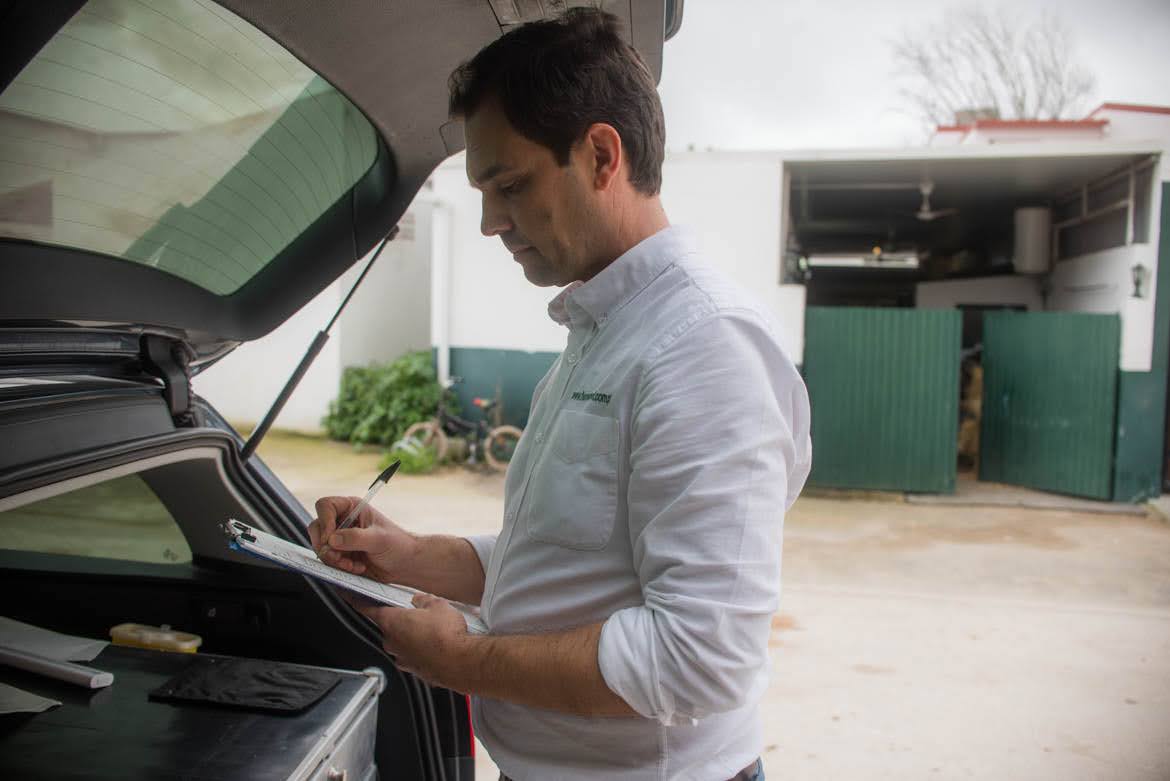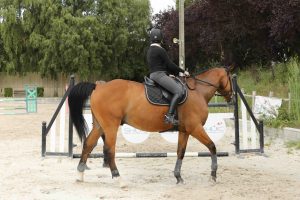Technologies dedicated to veterinary practice are powerful assistants for equine practitioners.
Assistance in the detection, prevention or monitoring of the rehabilitation of horses, objective data also considerably improves understanding between individuals. Whether it is during discussions with the rider/owner, or with the various professionals involved in the health of the horse.
Objective data as a basis for discussion
“The solutions are systematically studied in collaboration with the farriers because I am not the one who shoeing the horses' feet! It is impossible for me to impose an idea on a farrier without having his point of view. an observation made by the equine veterinarian, Rodrigo Riba de Ave, manager of the Horsevet Team veterinary activity.
“I work in collaboration with farriers for 20 years now. The experience acquired makes me say that we must admit that as veterinarians we do not know everything. Things are changing too. At the very end, it is the horse that puts us in our place. Has he improved? degraded? Is it stabilized? He is the one who has the last word!”
Dr. Rodrigo Riba de Ave is a knowledgeable professional on the usefulness of new technologies in terms of exchange and communication in his veterinary practice .
Equipped with Metron-DVM software and Equine Tendiboots™, objective data is now an integral part of its exchanges with farriers and its customer illustration.
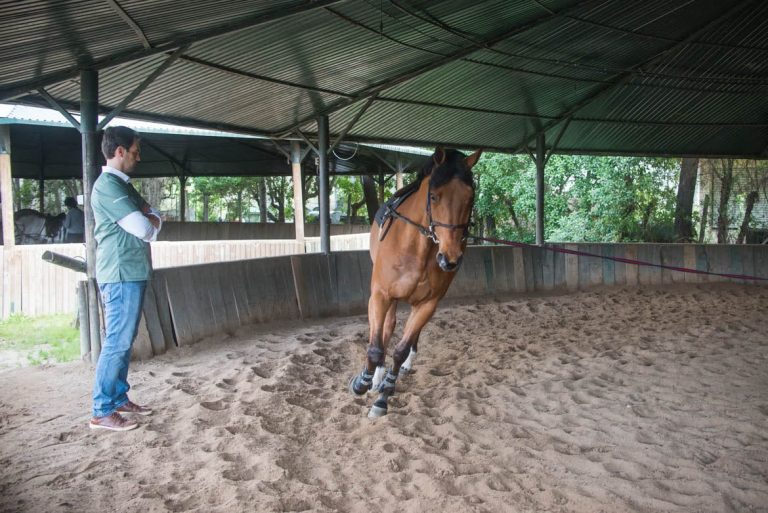
“Some owners do not have a clear representation of the anatomy of their horses' feet/limbs.
For example, it is not uncommon for my clients to don't know that the horse walks on one toe only.
They don't imagine the positioning of the navicular or even how the different forces are distributed on the phalanges. Without explanations, it is difficult for them to imagine the impacts on their horses.
Some features offered by new technologies improve exchanges with other professionals or customers. For example, the generation of 3D images of the Metron-DVM software is a real asset for my orthopedic consultations. I bring much more precise explanations to the riders. They understand what I am trying to do to treat or improve their horses.
The 3D functionality is also a very good tool for my discussions with the farriers."
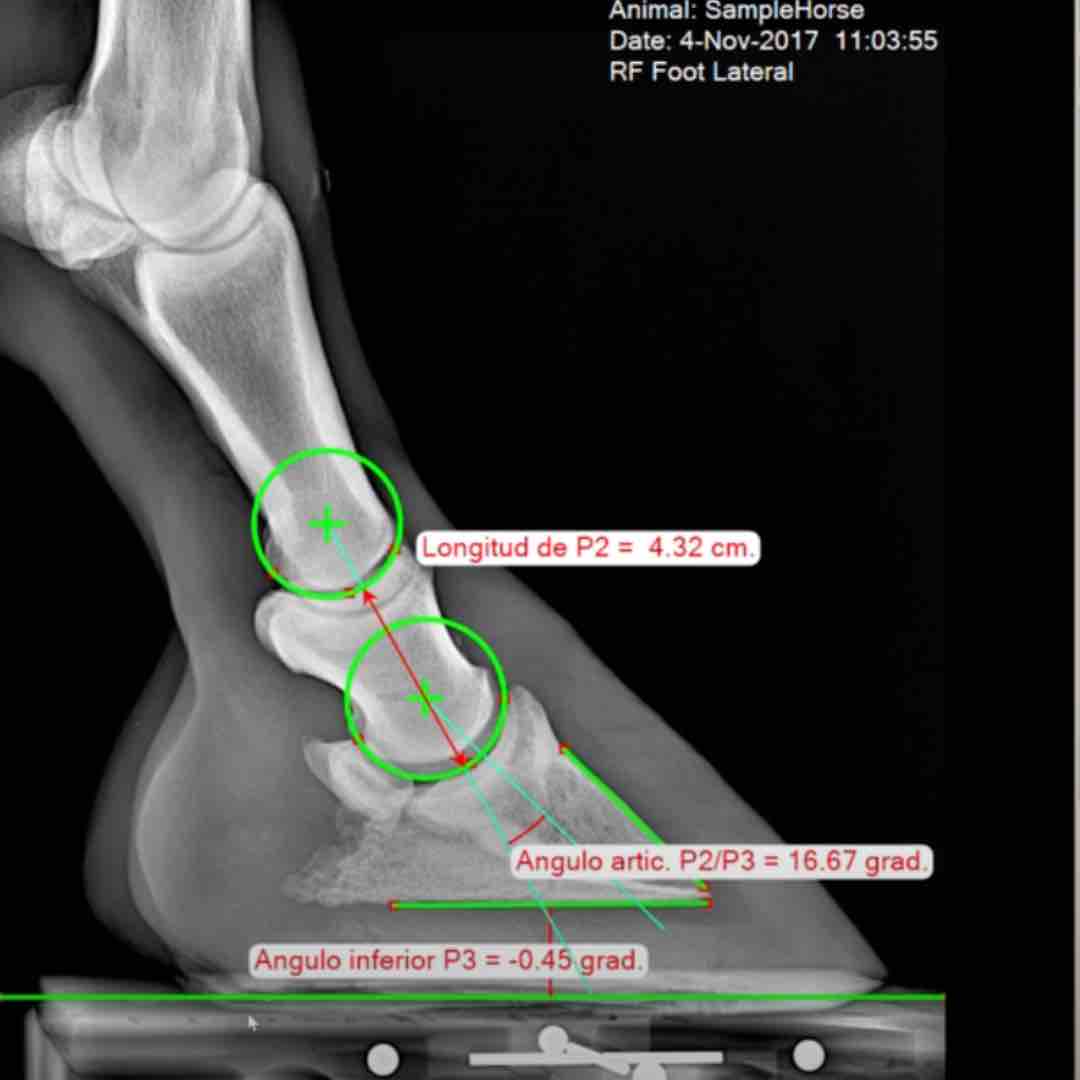
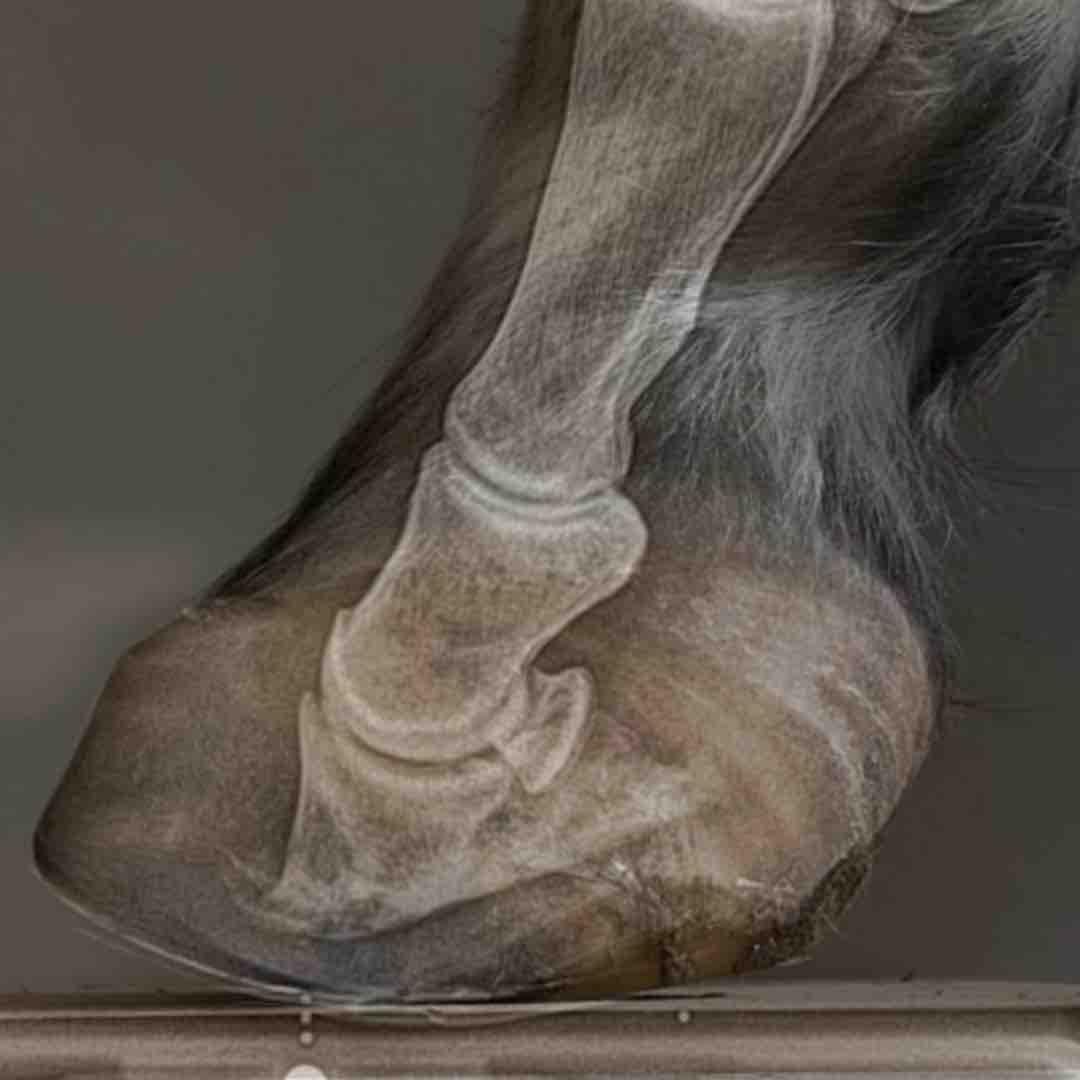
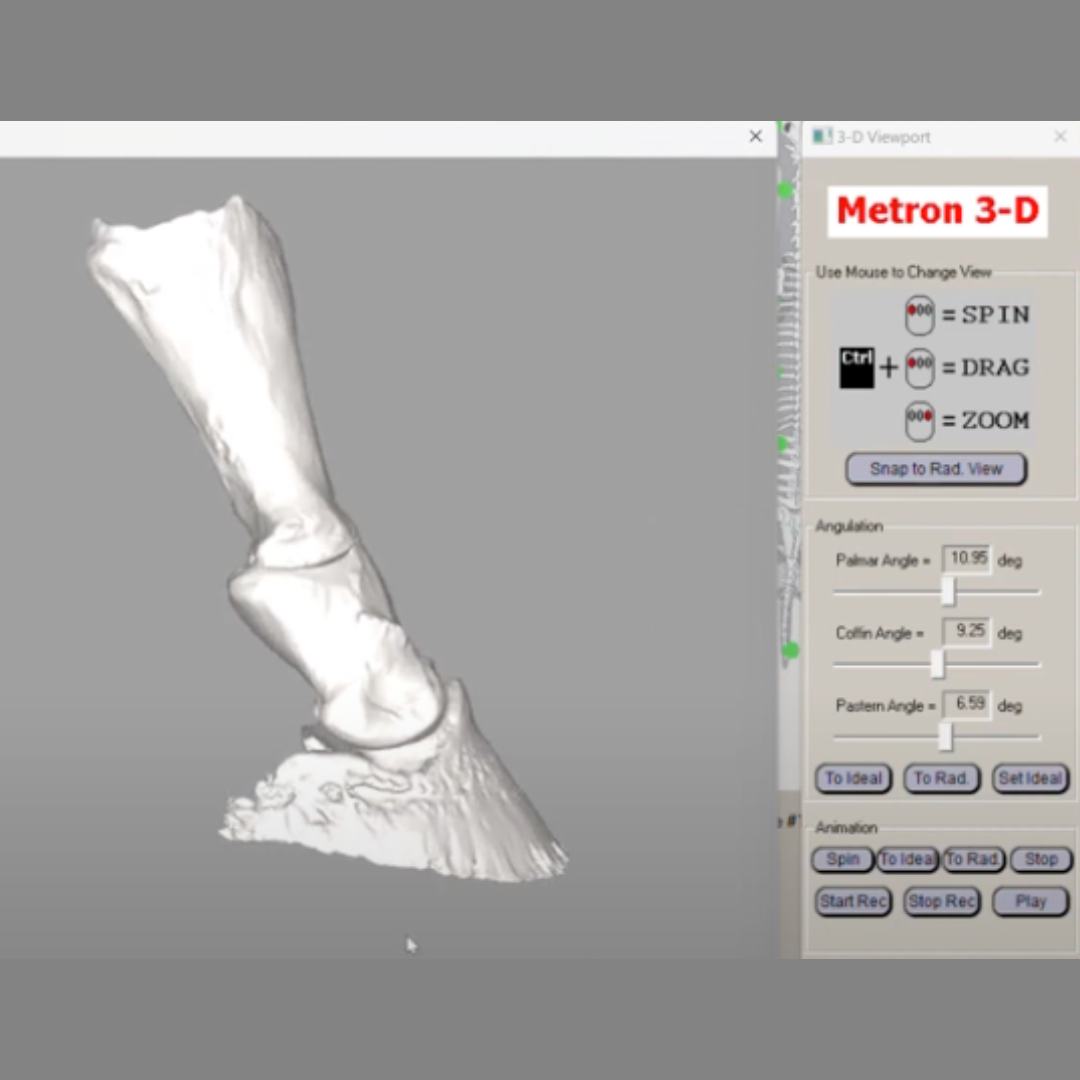
“I believe it is useful to objectively follow the evolution of horses whether it is the feet or the locomotion as I am led to do with the locomotion analysis devices Tendiboots™ Equine for example.
These tools help in the detection and follow-up of the good or bad evolution of the problems which have been raised.
Locomotion monitoring and analysis
"These technologies automatically generate reports that I can give to clients and farriers.
The 3D representation is a feature that I particularly appreciate for client illustration. With this option I can show the limb conformations of horses to owners .
The orientation of their horse's limb, as it is in reality, and a representation of a balance that would be ideal for their equine to function properly.
The rotation of the foot/limb makes it possible to clearly explain why there is an overload at such a place, why the navicular, the DDFT, a suspensor etc. are impacted and to explain how this causes the problems they observe on locomotion.
I think they better understand my diagnoses and treatment recommendations."
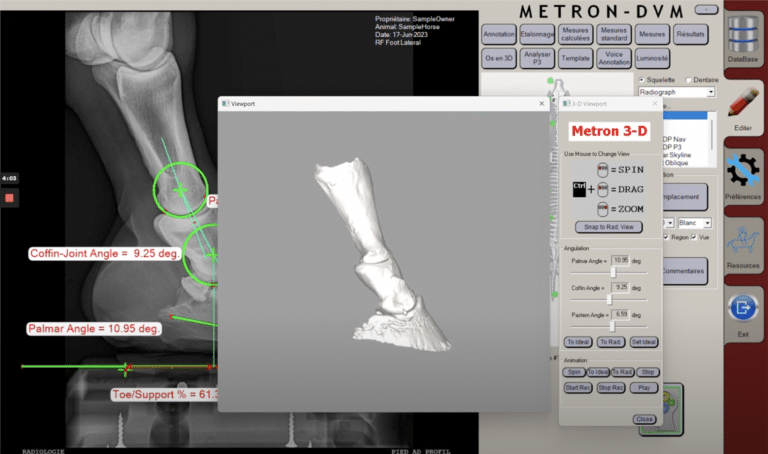
"It has happened to me, during joint support with a farrier, that 3D representations or even quantified measurements of the hoof capsule are very useful for directing the way in which the foot should be worked to improve locomotion. They are surprised at the help this information brings to their farriery work.”
Whether it is for X-rays or photos, Rodrigo considers objective measurements to be an asset to better understand the horses examined. In addition to the veterinary knowledge required, the data provides indications on how and why the feet develop. This makes communication with the different parties much easier.
“The concrete images/measurements help to better understand what is happening in the hooves and how it impacts the hoof shape.
It is very interesting to have real visual support and to be able to explain that my decisions are based on objective information and not just on what I think.”
Performing “before/after” is very common for our users equipped with our technologies (Tendiboots™ and Metron software) to attest to the effectiveness of a decision or intervention.
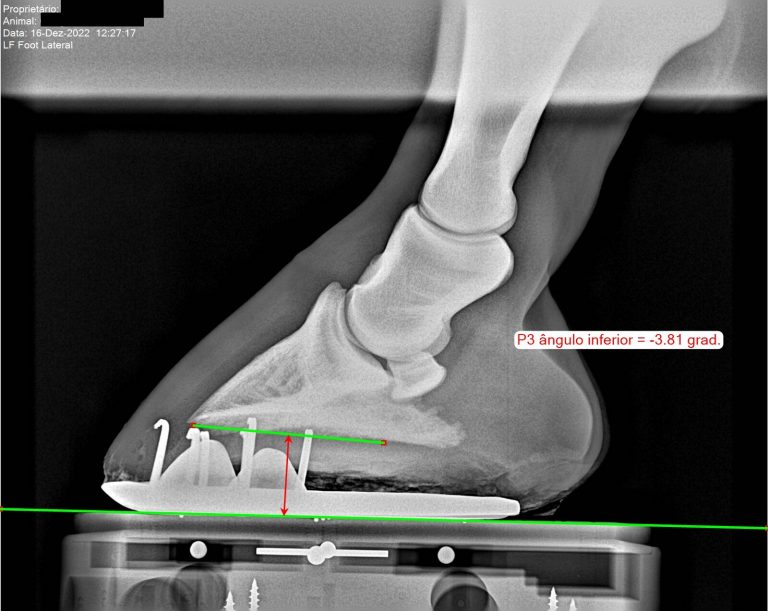

X-ray images and photographs of feet, for example, are taken before a farriery intervention. Veterinarian and farrier discuss the objectives to be achieved for each horse.
The same X-rays and photos of the feet are then taken after the farrier's intervention.
With this process, professionals can easily see whether the results obtained were those targeted or not as evidenced by Rodrigo:
“Sometimes, reading the legs and how the horse is moving, we think of strategies to implement to correct or relieve the problems detected .
It may happen that in reality we have not been able to achieve what we were aiming for. The before/after made with Metron-DVM ensure that we are actually improving the horse.”
Over time too, a follow-up objective of fittings, orthopedic evolution or even locomotion contribute to detecting the first signs of deterioration of the animal.
Explain the different pathologies
Among all the measures offered by the Metron-DVM software, Dr. Riba de Ave highlights the parameters that are useful to him for the illustration of his diagnoses:
The toe angle
“In my opinion, it is more difficult to become aware of a bad angle on the hindlimbs than on the forelimbs. In my case, therefore, I mainly use the measurements of the photos for the hindlimbs”.
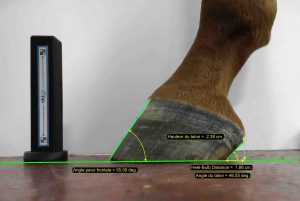
Measurements of X-rays in lateral view
“In lateral view, I mainly monitor the correct alignment of the phalanges, especially P2 and P3. This alignment must be within acceptable limits according to the criteria taught in equine veterinary medicine while adapting to the specific case I have in front of me.
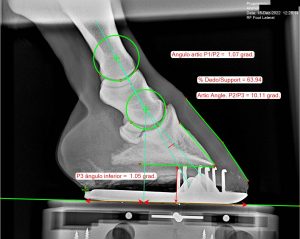
During my collaborations with the farriers, the software also indicates the leeway we have to work on the soles, for example. In my practice, I very often come across sport horses with crushed heels and too long toes.”
Asymmetrical feet
“The measurements are useful to me for the cases of “high/low” horses, with very different feet. One very straight hoof and the other flat.
For this type of case, my role with the farrier is to determine why the horse has developed an overload on one side (usually on the side flat foot) and the primary reason his feet are developing differently.”
Measurements of X-rays in DP view
"The most interesting information quantified by the software is for me the measurements of the intra-articular spaces laterally and medially. I thus easily detect if one of the sides is more flattened compared to the other.
The alignment of the phalanges is also a major piece of information here.
These data help to better understand why a foot have less developed heels or more flattened than the other for example.
The combination of lateral and frontal X-rays, coupled with Metron measurements, makes it possible to understand why the horses examined have the feet they have."
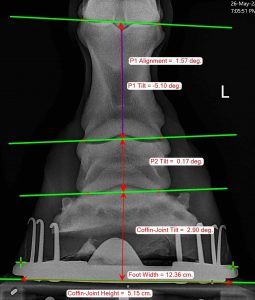
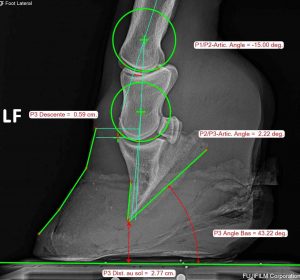
Laminitis
“I regularly use the Metron for cases of laminitis. The data is particularly useful for this type of pathologies. Descent, rotation of P3 or monitoring the thickness of the sole.”
Historic of the horse and pre-purchase examination
“Finally, when a new horse enters my clientele, I now carry out an inventory of the hooves by taking measured pictures. This makes it possible to keep an objective record of how the horse was purchased and to see its evolution, positive or negative, to take the necessary corrective measures.”

